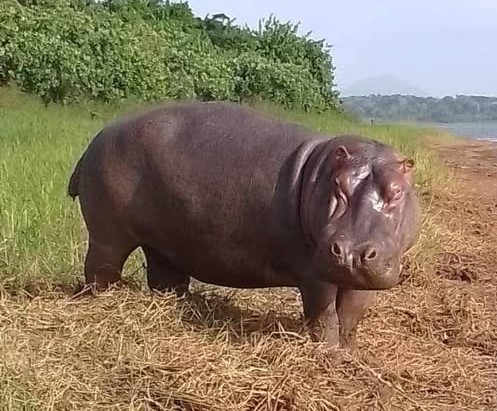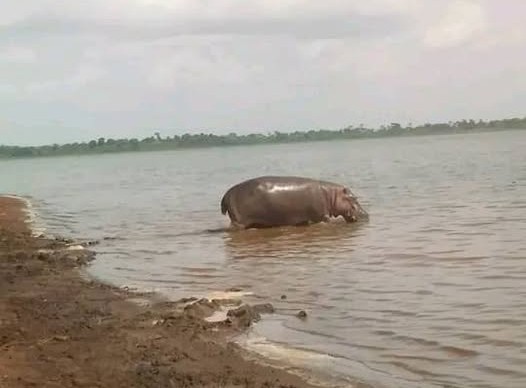A few weeks ago, a Hippopotamus ( Hippopotamus amphibius ) was sighted in Bambalang Lake, a man-made lake located in the North West Region of Cameroon, an eloquent reminder of the ecological importance of this freshwater body and a call to action for the conservation of the lake’s biodiversity.
Hippopotamus, which is one of Africa’s most emblematic species, is classified as Vulnerable on the IUCN Red List but drastically declining in population due to habitat loss, poaching, water pollution, and human-wildlife conflict. Its presence in the Bambalang Lake attests to the fact that the lake has adequate water depth, aquatic vegetation, and relatively undisturbed zones, which are suitable conditions for hippopotamus habitation.

The recent sighting of this iconic species at Bambalang Lake, has sparked excitement and a deep sense of pride among the indigenous people of Bambalang. “Mbaw-Yakum (Bambalang) is a land of plenty, including some important species like this Hippopotamus, which we saw grassing along the shore of Kroloh (one of the Islands in Mbaw-Yakum). I am proud to be part of this beautiful village,” said Robert Nashong, a Bambalang denizen.
Other people of Bambalang, see the presence of Hippopotamus in their ancestral waters as a symbol of ecological richness and a reminder of their natural heritage. “It was very beautiful to watch. The last time I saw this animal in 1973. Our people MUST NOT HUNT them for any reason,” Kwenui Andreas Ngounjoh, a Bambalang elite cautioned.
To Dr. Fongong Rapheal Fonsi, some Bambalang people, it the first time seeing a live image of hippopotamus in the village. “It gave me the impression that our village could be a great touristic destination,” Dr. Fongong noted. He cautioned that “though this hippopotamus moved freely without harming any one, those living around the lake, especially the fishermen must be cautious to avoid any confrontation with the animal that may bring about any casualty”.
Hippopotamus in an Artificial Lake?

The Bambalang Lake was formed in 1974 following the construction of the Baminjim Dam in Noun Division, West Region of Cameroon for hydroelectric power and water supply. The presence of a hippopotamus in Bambalang Lake, despite it being a man-made lake, raises interesting ecological and historical questions about its origin and movement. While more research is required to ascertain its origin, it is possible that as the dam was constructed, water levels rose and created an expanded water body, the Bambalang Lake, and hippopotamuses that were already living in the Noun River, naturally followed the rising waters into their new, expanded home in Bambalang.
While artificial, the lake has developed a dynamic freshwater ecosystem over the decades and is now home to numerous species of fish, birds, amphibians, and aquatic plants. If protected and managed well, the lake can serve as a safe haven for not just this species but for a wide range of aquatic and terrestrial biodiversity. Conservation efforts now will ensure ecological balance, sustainable livelihoods, and a living legacy for future generations.
By Ndimuh Bertrand Shancho
